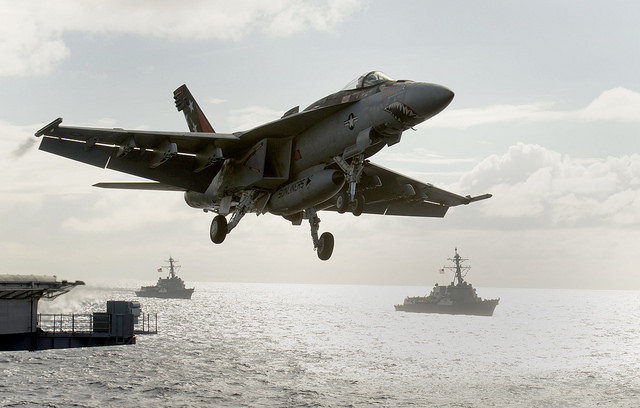The US Navy’s director of air warfare says efforts to overcome high rates of hypoxia and decompression sickness in pilots flying Boeing F/A-18 variants is “like chasing a ghost,” but he remains confident in the aircraft and its oxygen backup systems nevertheless.
Since 2010, F/A-18 pilots have been asked to report every possible physiological event like dizziness or confusion because of suspected problems with the aircraft’s onboard oxygen generation systems (OBOGS) and environmental control system (ECS).
Those rates have been consistently high over the past six reporting period, with an average of 19.7 cases per 100,000 flight hours for the early model F/A-18s and 20.4 for the newer F/A-18E/F Super Hornet.
The average is 8.9 per 100,000 flight hours for EA-18G Growler pilots, except for a “statistical anomaly” in 2015 with 43.5 cases reported.
Rear Adm Michael Manazir says during a congressional hearing on naval strike fighters today that efforts to come up with a material solution to the problem is like chasing a ghost because it’s difficult to recreate the scenario without knowing exactly what is causing the problem, and there are no onboard sensors to record carbon monoxide or contaminant levels.
“We’re trying to get the rate down,” Manazir says. “If we had a confidence problem in the airplane, we would ground the fleet but we don’t have that problem.”

US Navy
Director of navy tactical aircraft Rear Adm Michael Moran says 18 or 19 changes have been made to the environmental control system to include new pressure and control valves and sensors to deal with possible causes of the decompression sickness.
New filtration systems have already been installed in the oxygen generation systems of 219 aircraft to better remove carbon monoxide and other contaminants from the pilot’s oxygen. Those filters will eventually be rolled out across the F/A-18 fleet, and testing of a new oxygen monitoring system should wrap up later this year for installation in 2017 if it checks out.
“We’re getting good test results on removing the carbon monoxide, and now doing a study to see what else is out there,” Moran says.
Congress has taken particular interest in the issue as the navy seeks to buy more Super Hornets from Boeing, hoping to avoid a repeat of the F-22A Raptor hypoxia incident where problems with the aircrew life support system contributed to the death of one pilot and grounded the fleet. He crashed the fighter jet while trying to pull the backup oxygen lever, leading to the installation of an automatic backup oxygen system.
Manazir says he has full confidence in the F/A-18’s backup oxygen system. “That system has worked 100% every time and I’m confident it still will,” he says.
“Even one event can be catastrophic and you can lose the airplane. I don’t think we will, but we’re trying to drive these events down through all of the actions we talked about.”
Source: FlightGlobal.com
















